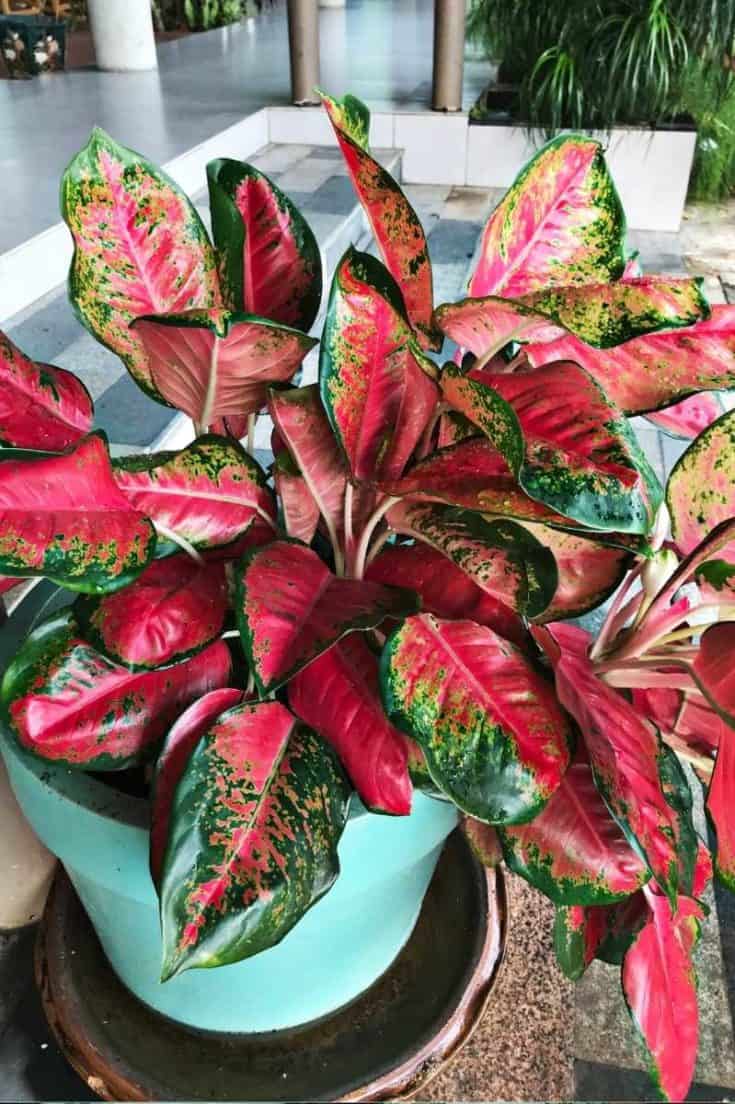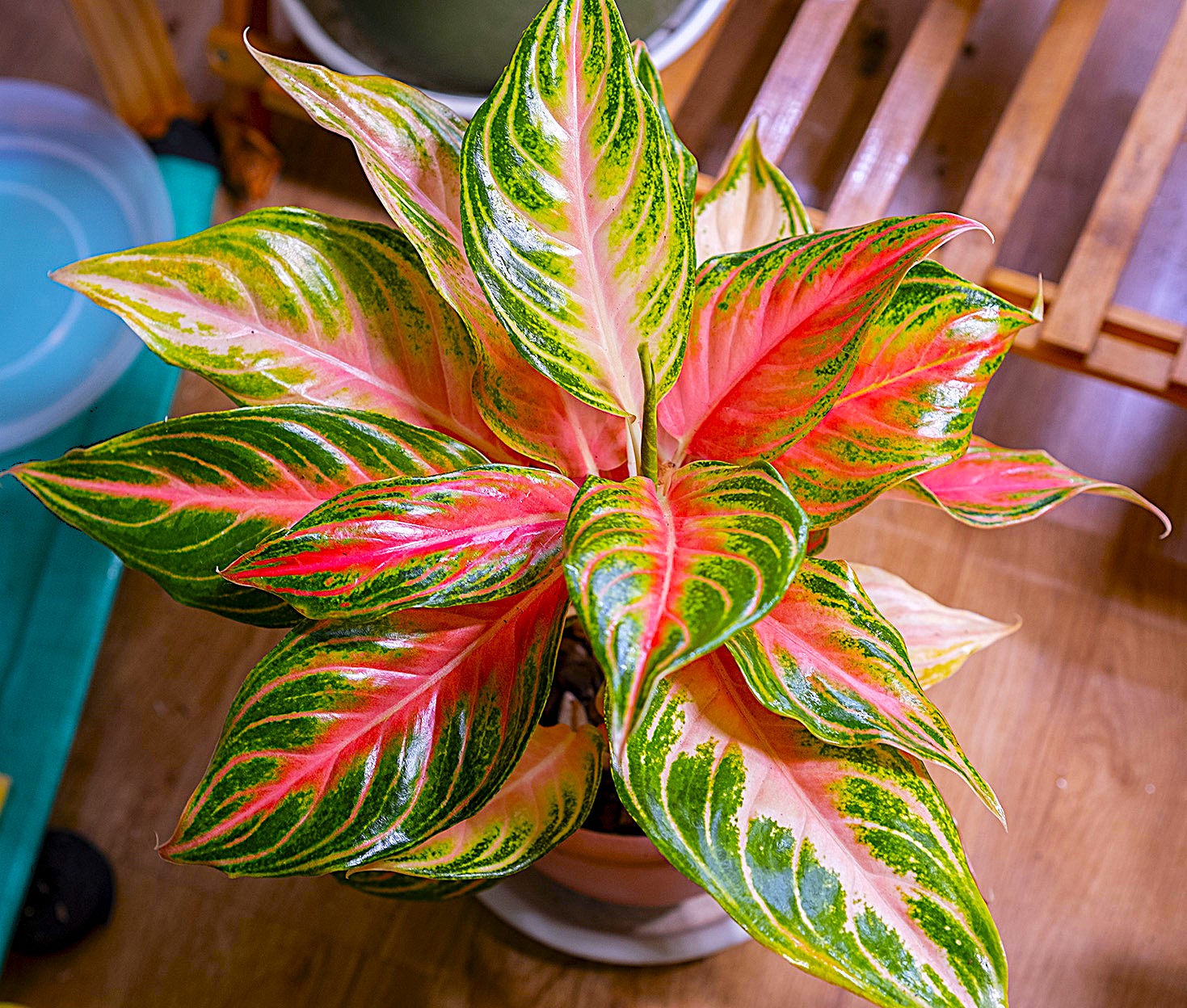Aglaonema: The Low-Key Superstar of Houseplants
You know those houseplants that just seem to thrive without much fuss? Well, Aglaonema, often called Chinese Evergreen, is definitely one of those chill characters. It’s been a favorite for years, and for good reason. These plants are not only pretty darn good at tolerating less-than-perfect conditions, but they also come in a whole bunch of cool looks, from deep greens to vibrant reds and silvers. If you’re after something that adds a touch of green (or red, or silver!) to your space without demanding constant attention, Aglaonema might just be your new best plant friend.
A Bit of Background on These Hardy Guys
Aglaonemas are native to the tropical and subtropical regions of Asia. Think places like Thailand, Indonesia, and the Philippines. This tropical heritage means they’re used to warm, humid environments, but they’ve adapted pretty well to our indoor lives. They’re part of the Araceae family, which also includes other popular houseplants like peace lilies and philodendrons. What’s neat is that over time, plant breeders have developed tons of different cultivars, each with its unique leaf patterns and colors. This variety is a big part of why Aglaonemas are so popular today. You can find one to match pretty much any decor style.

Why Aglaonema is a Winner for Plant Lovers
There are several reasons why Aglaonema has earned its spot as a go-to houseplant. First off, they’re known for being pretty forgiving. Forget to water them once in a while? No biggie (usually!). They can handle lower light conditions better than many other colorful houseplants. This makes them perfect for those corners of your home or office that don’t get a ton of direct sunlight. Plus, they’re generally considered to be relatively low-maintenance when it comes to pests and diseases. Of course, no plant is entirely immune, but Aglaonemas tend to be more resilient than some of their high-maintenance cousins.
All the Looks: Exploring Aglaonema Varieties
One of the most exciting things about Aglaonemas is the sheer variety you can find. While the classic varieties are known for their lush green leaves, you can now find types with stunning splashes of red, pink, silver, and even orange. Some popular cultivars include ‘Silver Queen’ with its silvery-green leaves, ‘Red Aglaonema’ with vibrant red or pink hues, and ‘Emerald Beauty’ which boasts broad, dark green leaves with silver markings. Exploring the different varieties is like collecting little living pieces of art. Each one brings a unique vibe to your space.

Keeping Your Aglaonema Happy: Care Basics
Even though Aglaonemas are relatively low-maintenance, giving them the right care will help them thrive. Here’s a rundown of the basics:
Light
While they can tolerate low light, Aglaonemas generally do best in bright, indirect light. Avoid placing them in direct sunlight, which can scorch their leaves. If you notice the colors fading on a variegated variety, it might need a bit more light.
Water
Let the top inch or two of soil dry out between waterings. Overwatering can lead to root rot, which is a big no-no for these guys. During the winter months when growth slows down, you’ll need to water less frequently.
Soil
A well-draining potting mix is ideal. You can use a standard indoor potting mix.
Humidity
Aglaonemas appreciate humidity, thanks to their tropical roots. If your home air is particularly dry, especially in winter, you can increase humidity by misting the plant occasionally, using a pebble tray filled with water, or placing a humidifier nearby.
Temperature
They prefer temperatures between 65-80°F (18-27°C). Avoid exposing them to drafts or sudden temperature changes.
Fertilizing
Feed your Aglaonema with a balanced liquid fertilizer diluted to half strength every 2-4 weeks during the growing season (spring and summer). Hold off on fertilizing during the fall and winter when the plant’s growth naturally slows down.
Potential Issues to Watch Out For
While generally easygoing, Aglaonemas can sometimes encounter a few problems:
Yellowing Leaves
This can be a sign of overwatering or underwatering. Check the soil moisture to determine the cause and adjust your watering accordingly.
Brown Leaf Tips
Dry air is often the culprit behind brown leaf tips. Increasing humidity can help prevent this.
Pests
Keep an eye out for common houseplant pests like spider mites, mealybugs, and scale. If you spot any, isolate the plant and treat it with an appropriate insecticidal soap or neem oil.
Aglaonema: More Than Just a Pretty Plant
Beyond their good looks and easy care, Aglaonemas are also known for their air-purifying qualities, although the extent of this is often debated. Still, having a bit of greenery around can definitely boost your mood and create a more pleasant indoor environment. Plus, their resilience can be quite inspiring – they just keep on going, even when conditions aren’t perfect.
Conclusion: Embracing the Beauty and Ease of Aglaonema
Aglaonema plants are truly fantastic additions to any indoor space. Their stunning variety, coupled with their low-maintenance nature, makes them a winner for both beginner and experienced plant enthusiasts. They bring a touch of the tropics indoors and ask for very little in return. If you’re looking for a plant that offers both beauty and resilience, the Aglaonema is definitely worth considering.
Frequently Asked Questions About Aglaonema
1. Are Aglaonema plants toxic to pets?
Yes, Aglaonema plants contain calcium oxalate crystals, which can cause irritation to the mouth, tongue, and throat if ingested by pets (cats and dogs) or humans. It’s best to keep them out of reach of curious animals and small children.
2. How often should I repot my Aglaonema?
Aglaonemas don’t need frequent repotting. Typically, repotting every 1-2 years, or when the plant has outgrown its current container, is sufficient. You’ll know it’s time to repot when you see roots growing out of the drainage holes.
3. Can Aglaonema plants grow in very low light?
While Aglaonemas can tolerate low light conditions, they will generally thrive better and maintain more vibrant colors in bright, indirect light. Very low light may lead to slower growth and a loss of variegation in some varieties.
4. Why are the leaves of my Aglaonema drooping?
Drooping leaves can be a sign of several issues, including overwatering, underwatering, or even shock from a sudden change in environment. Check the soil moisture and ensure the plant is not in a draft or experiencing extreme temperature fluctuations.
5. How do I propagate Aglaonema plants?
The most common methods for propagating Aglaonemas are stem cuttings and division. For stem cuttings, take a cutting with at least one node and root it in water or moist potting mix. For division, carefully separate the plant into smaller sections at the root ball during repotting, ensuring each section has its own roots and leaves.
Aglaonema Plant